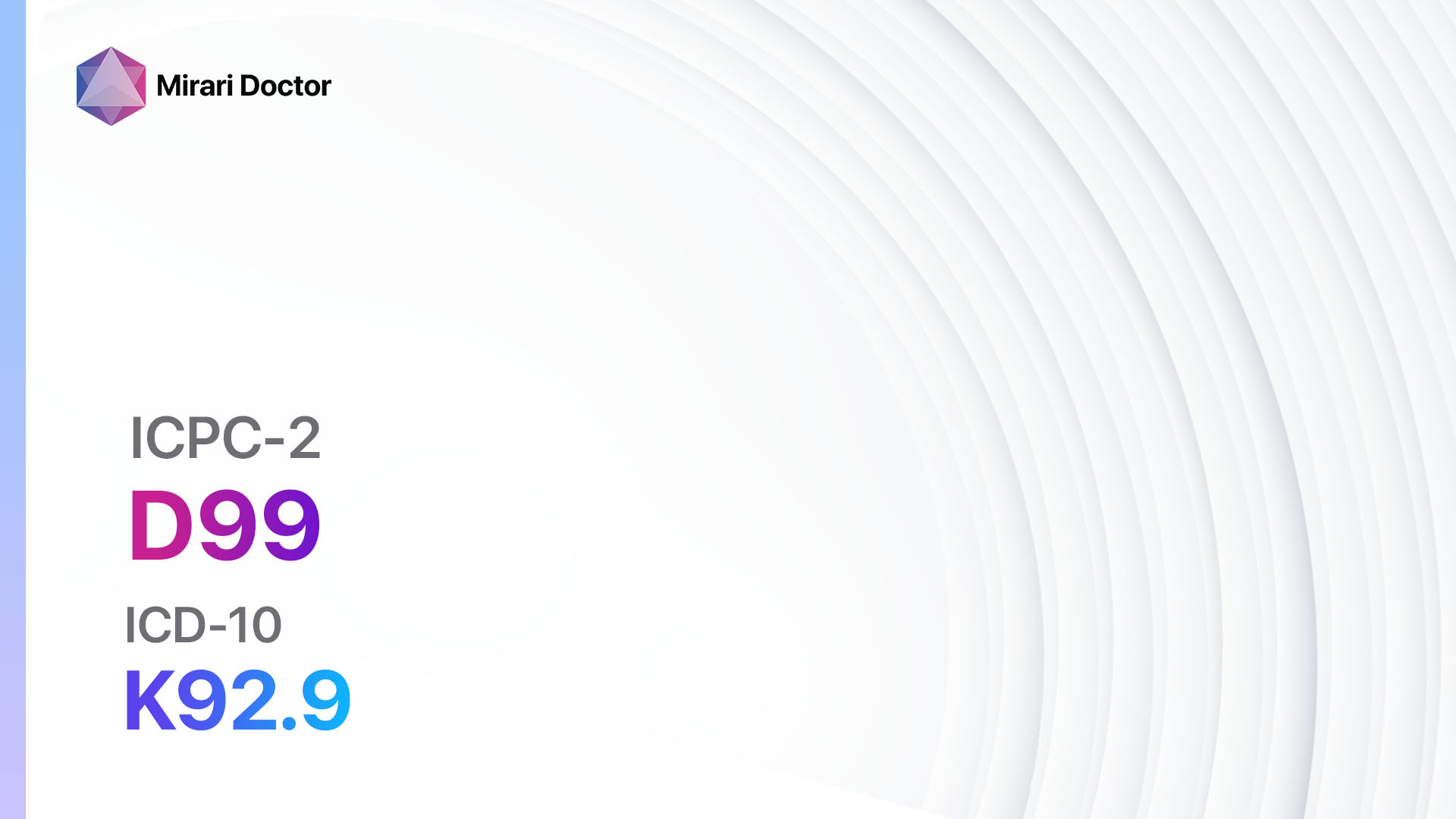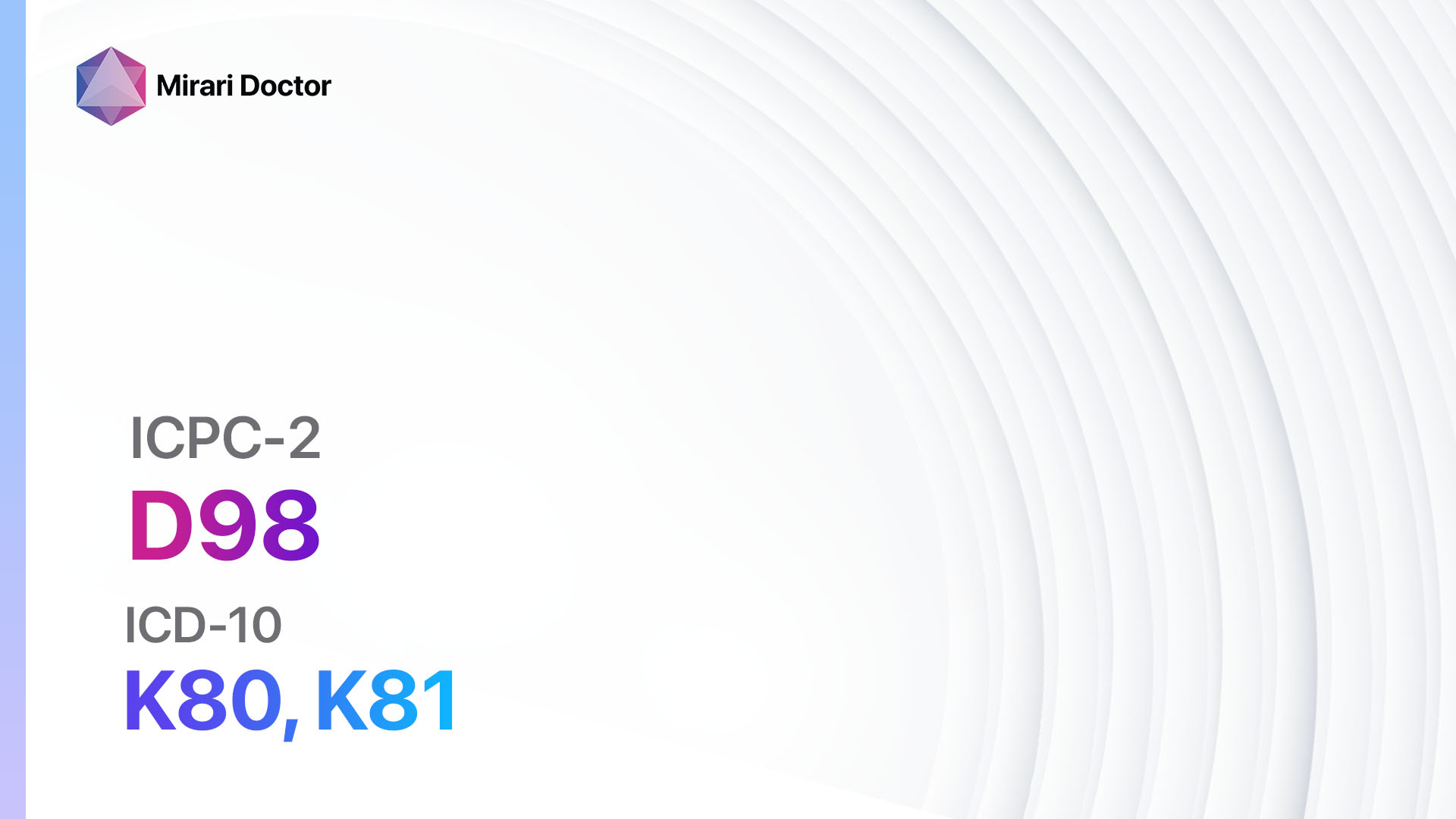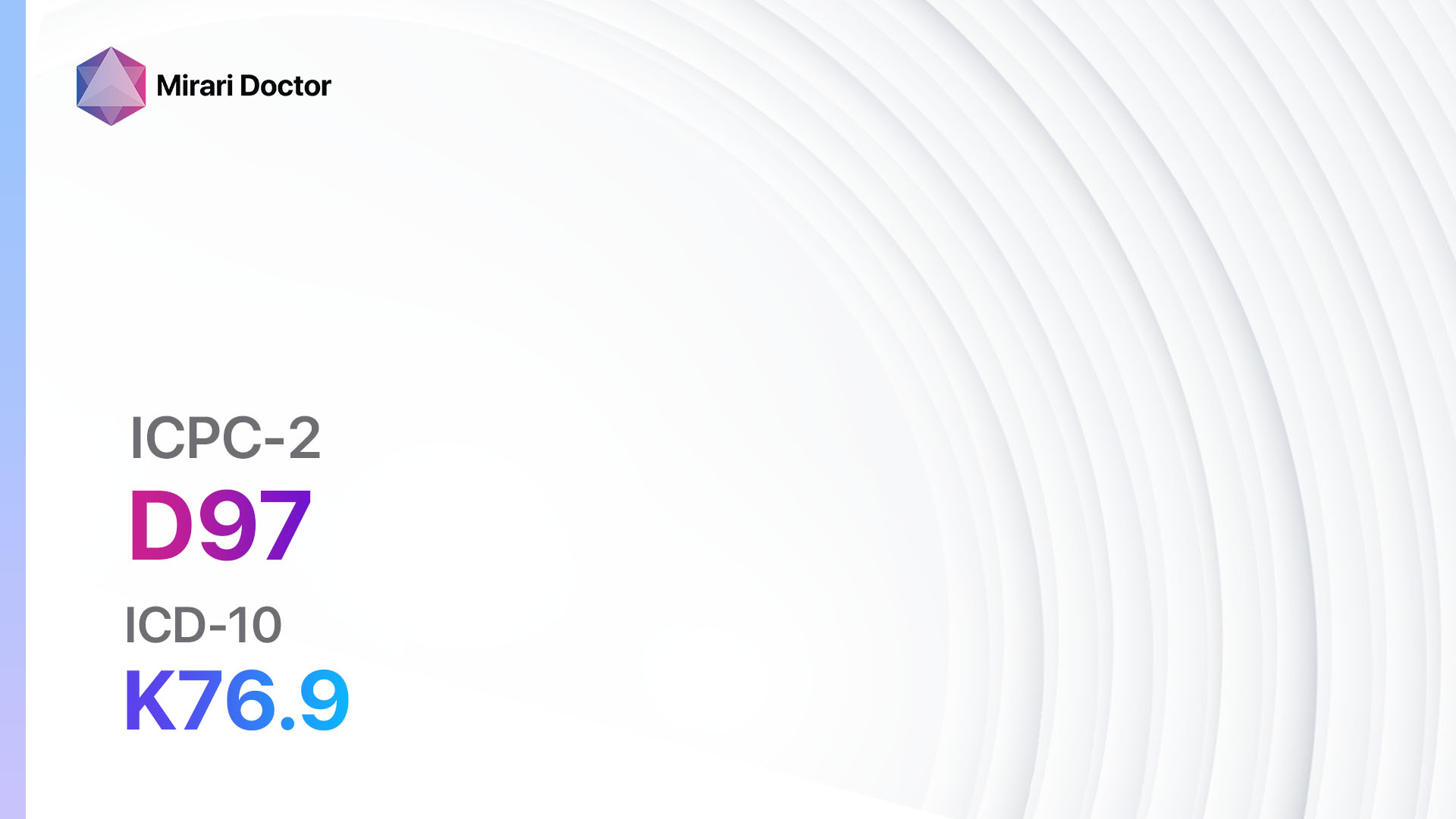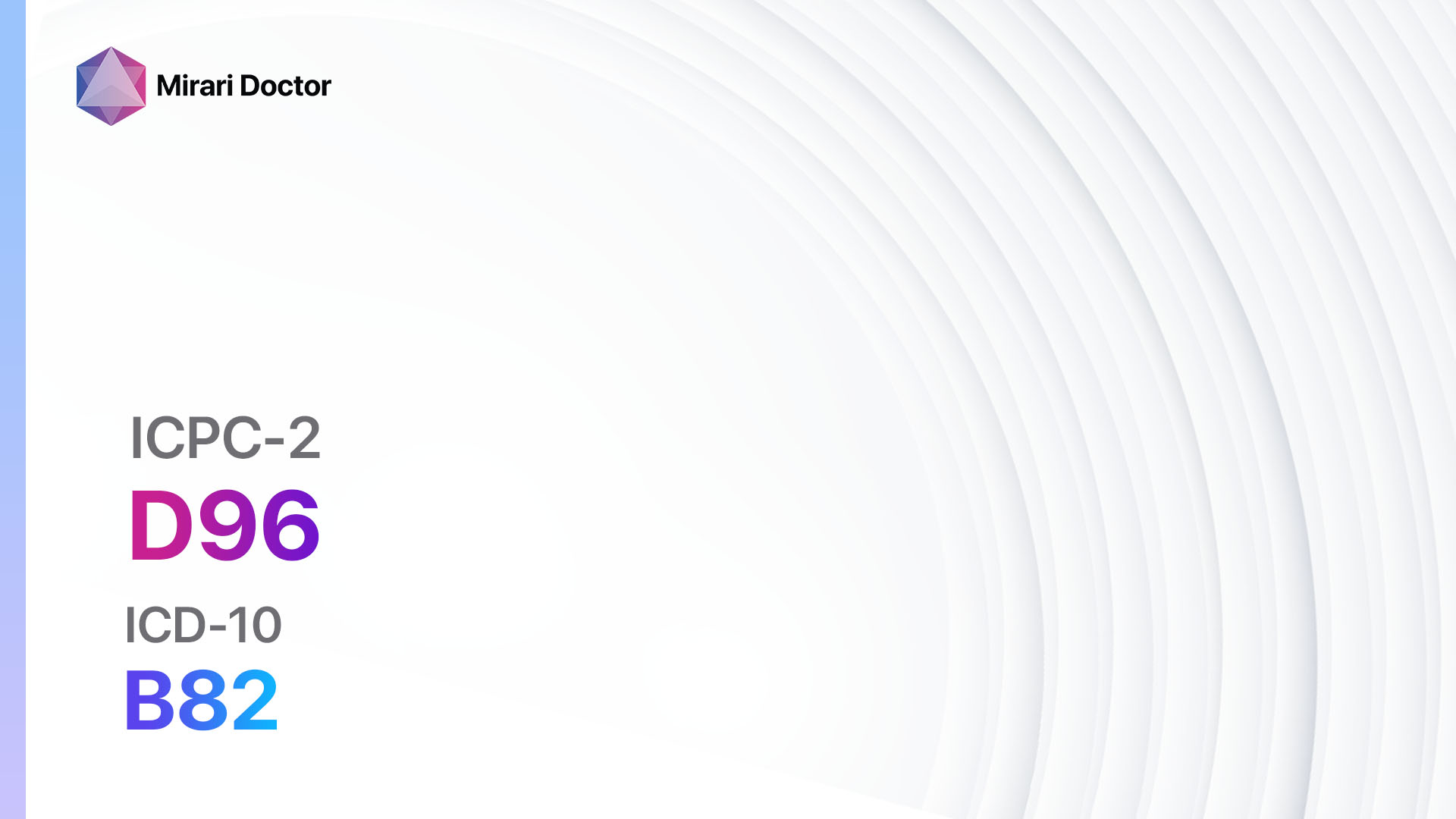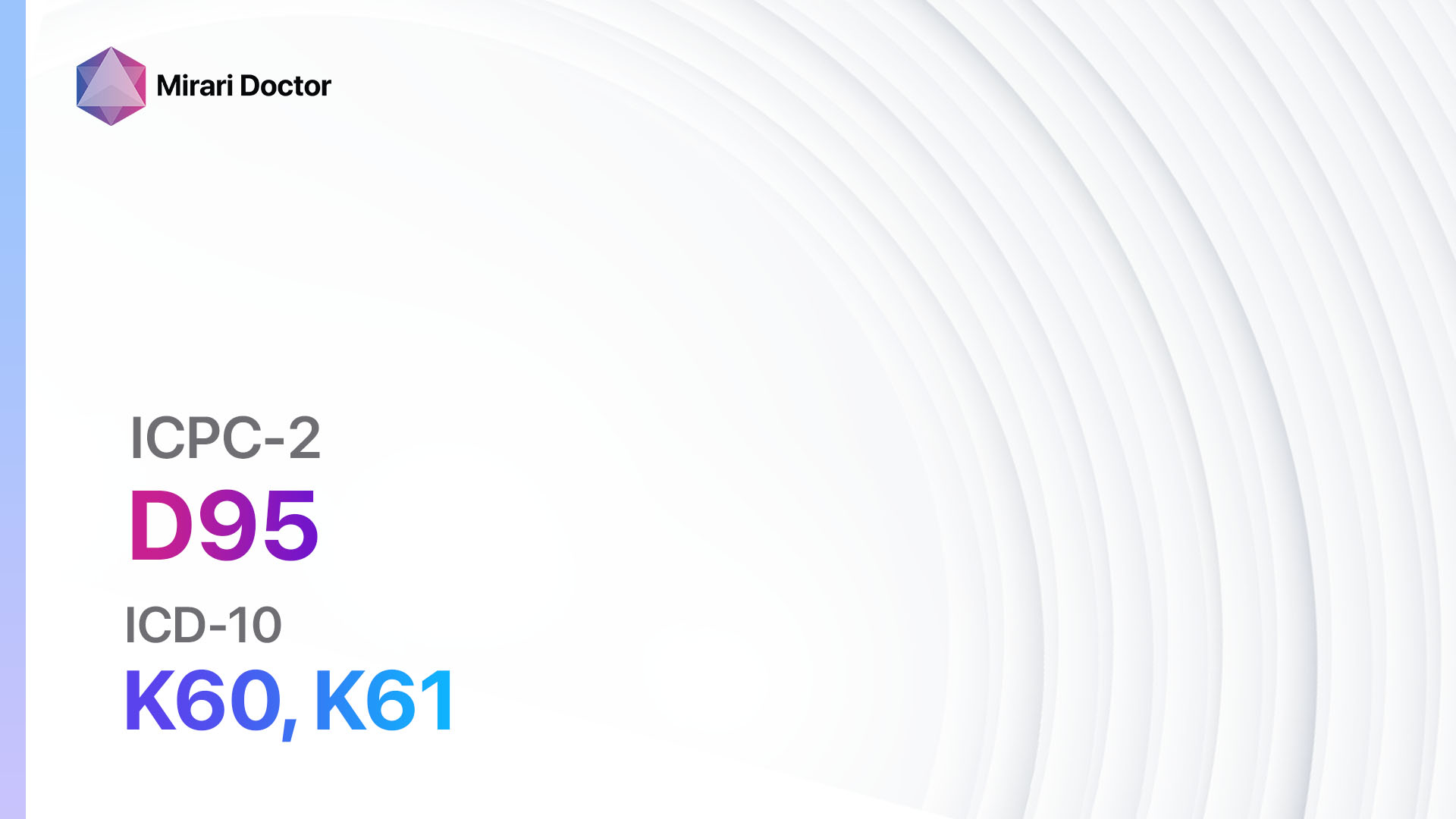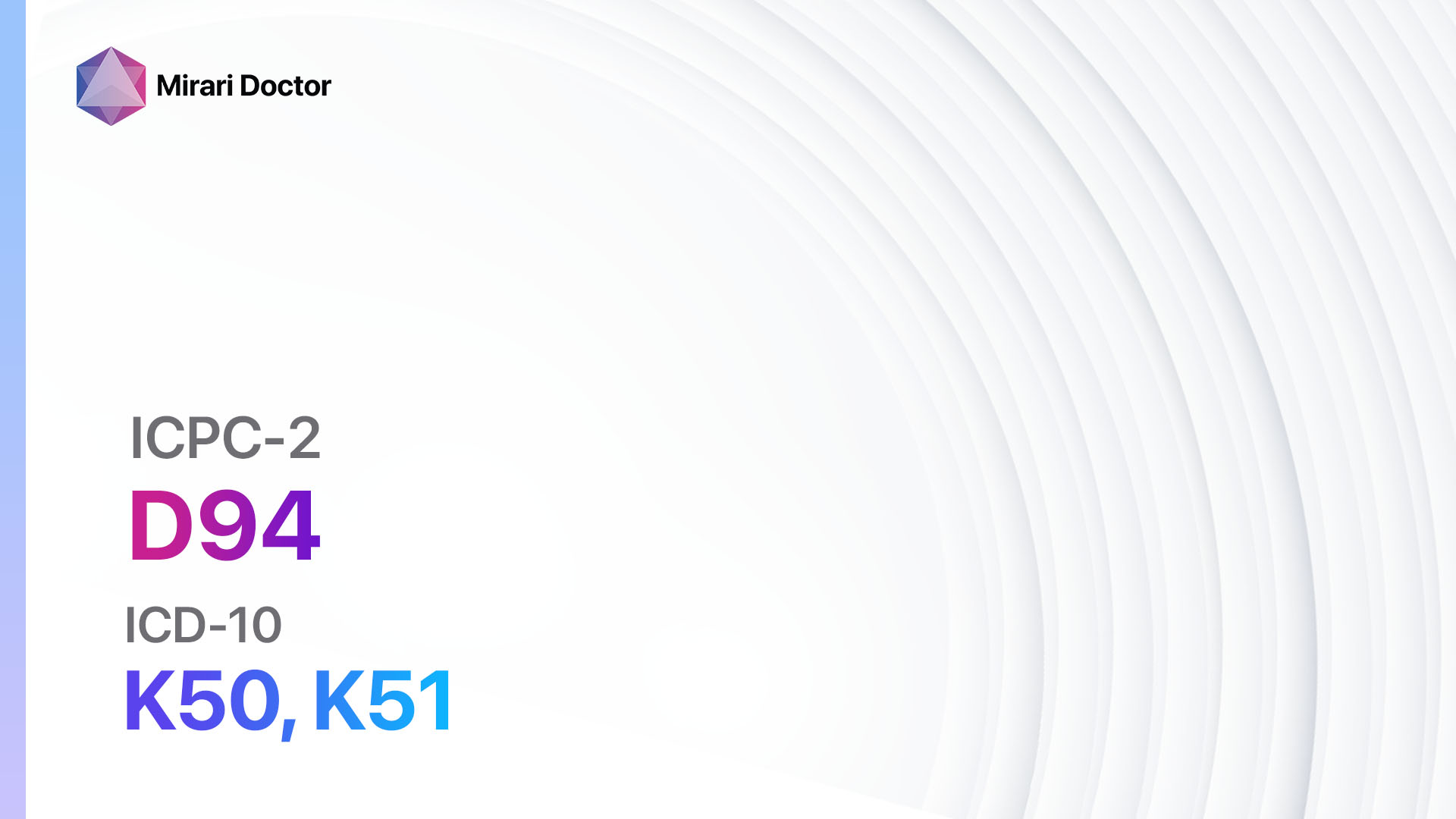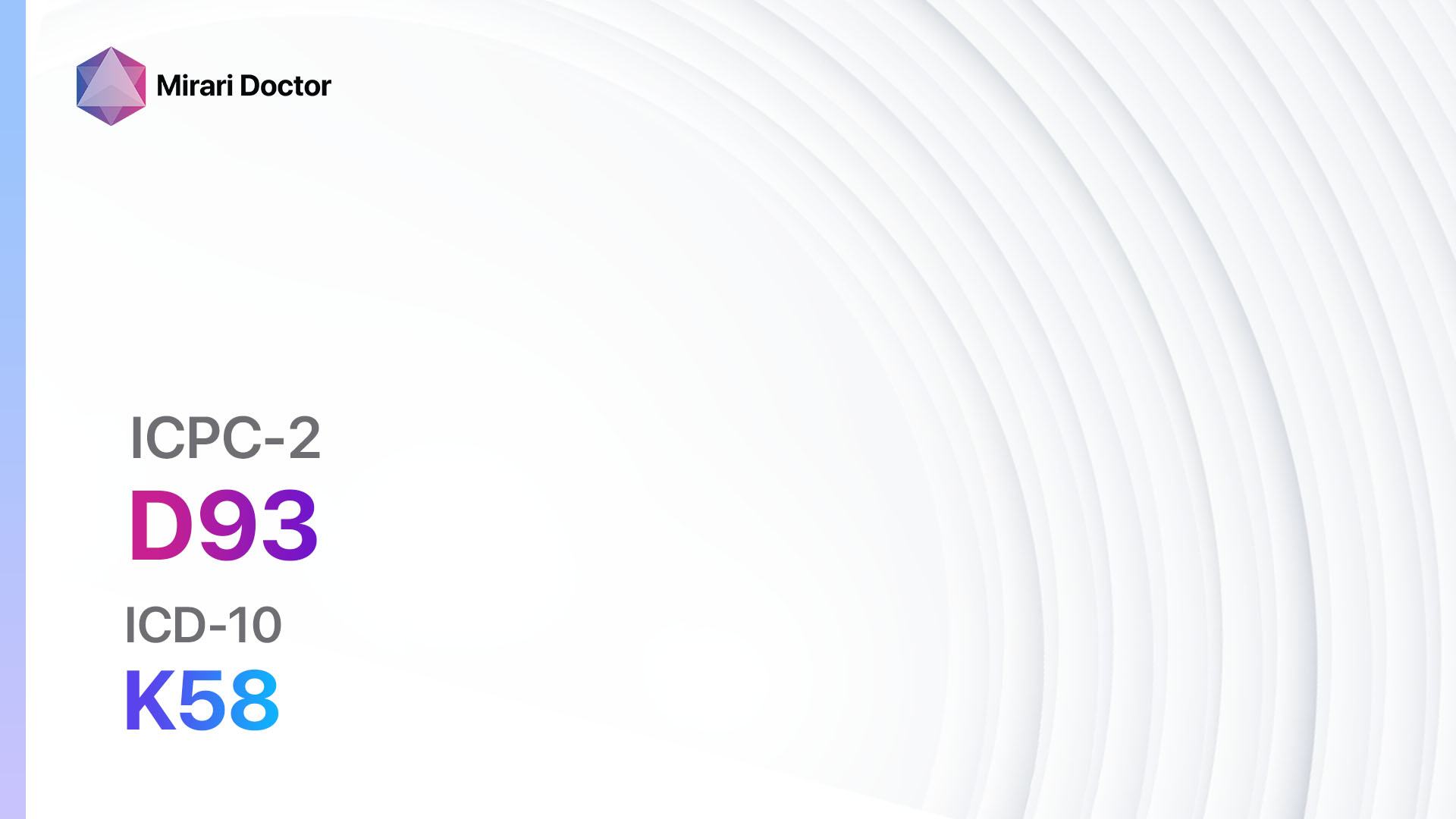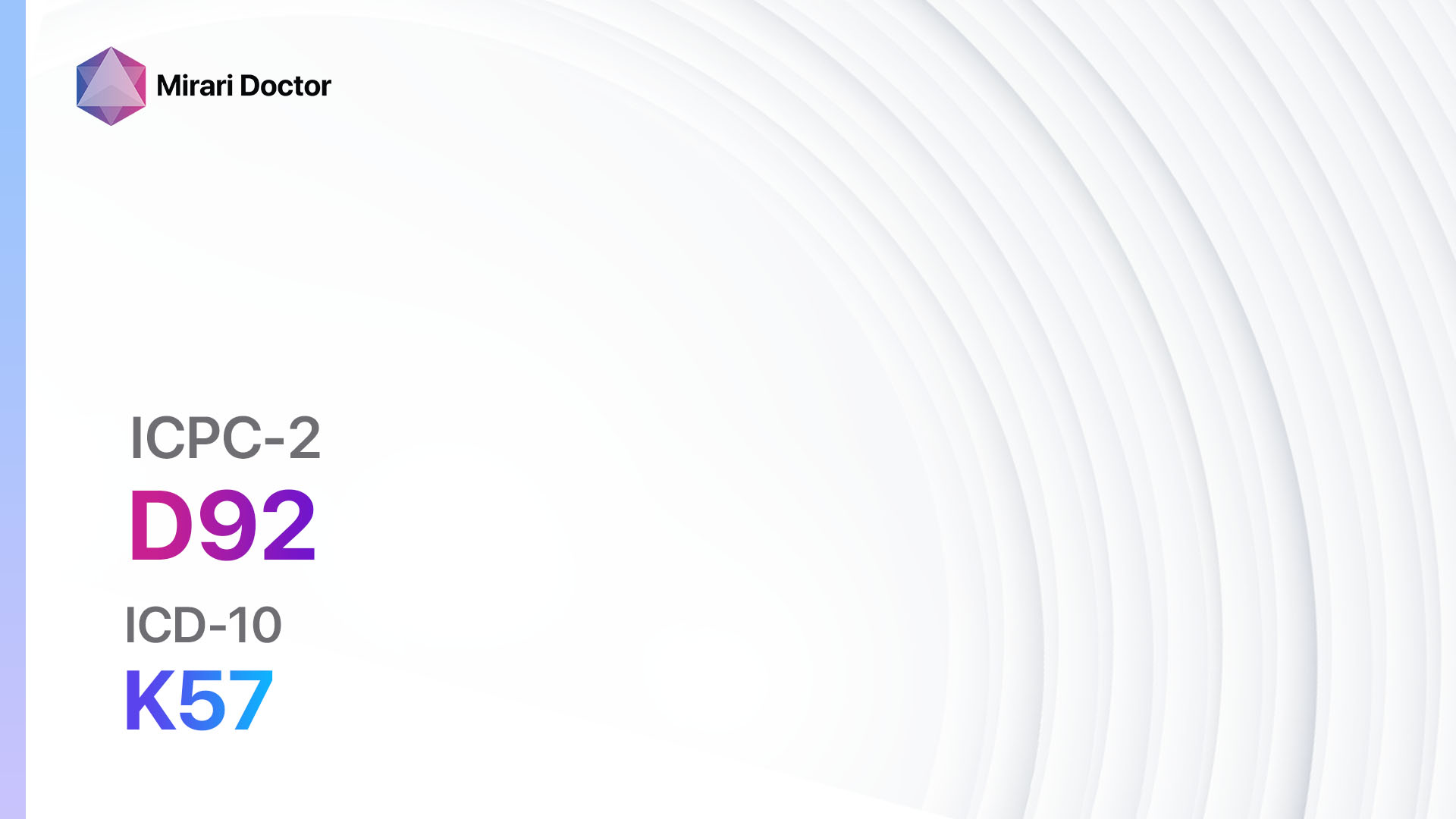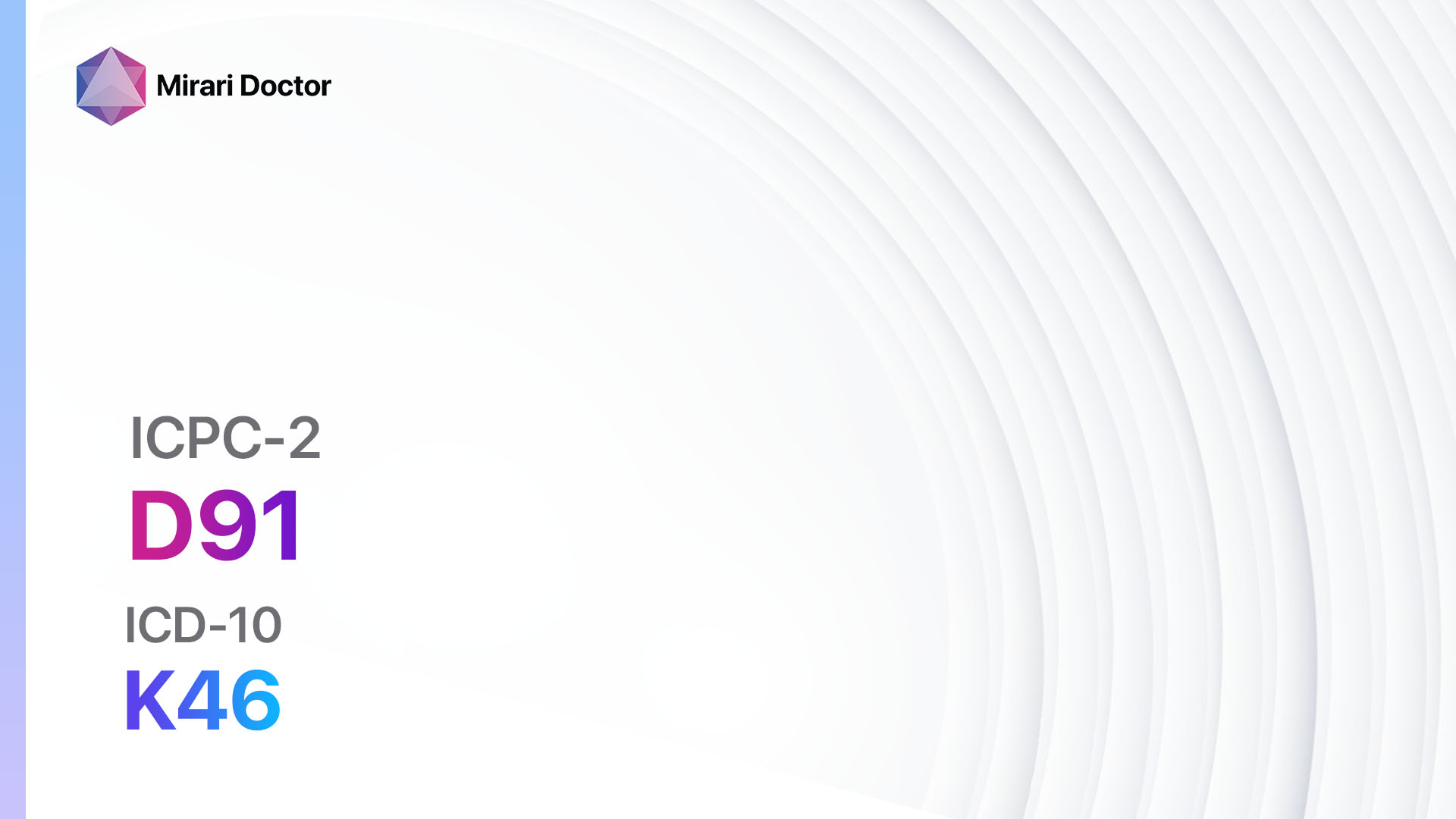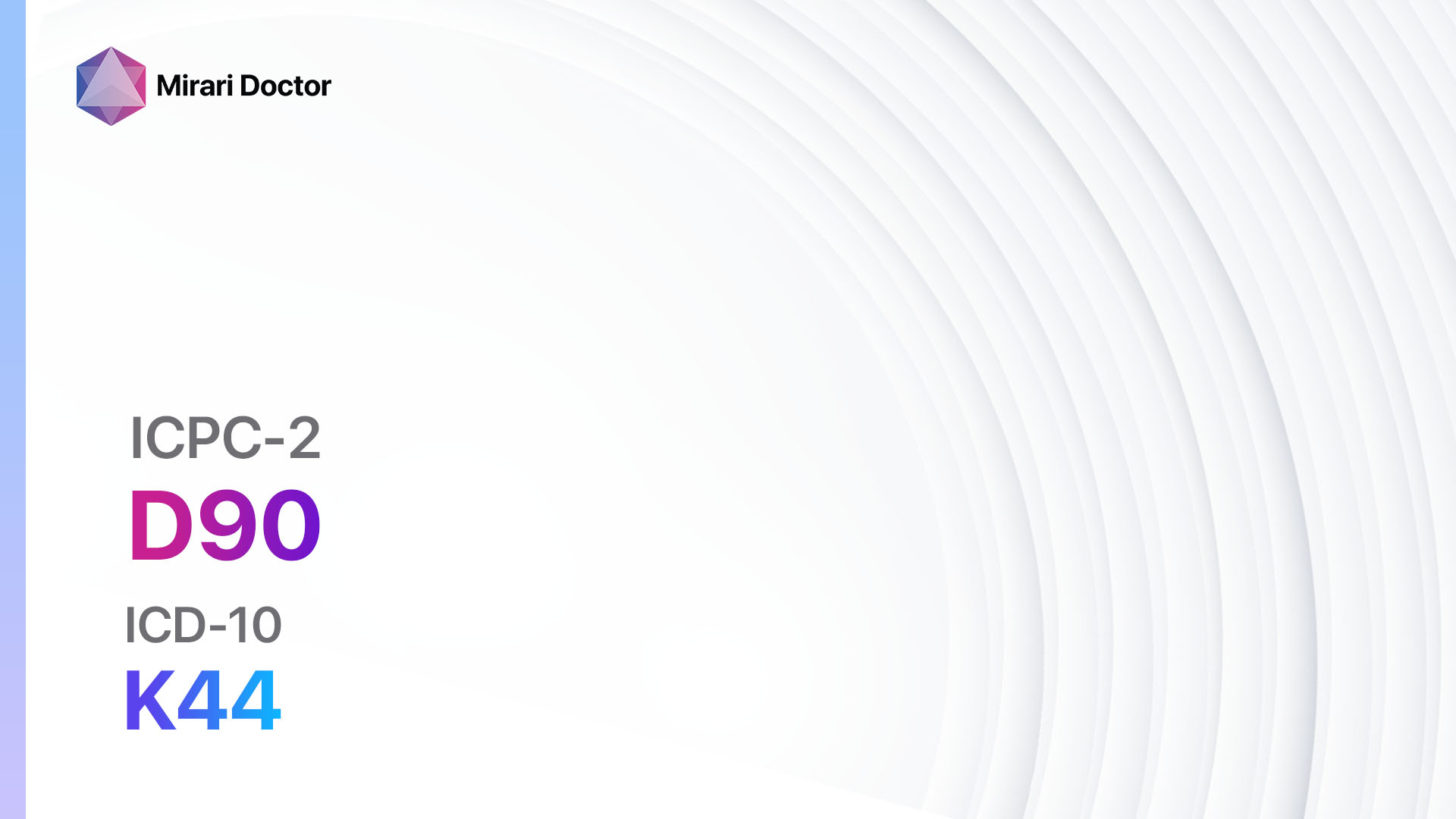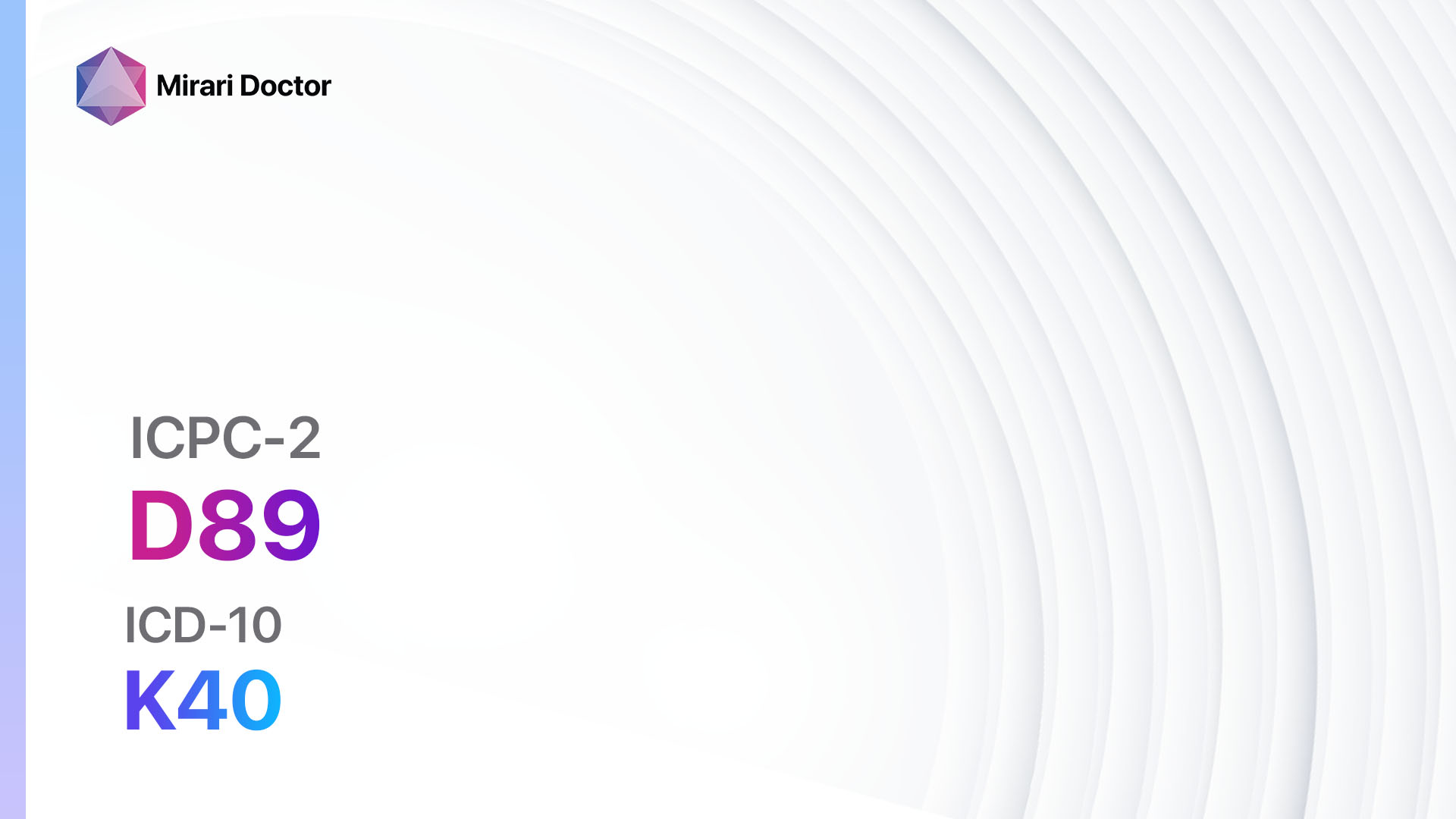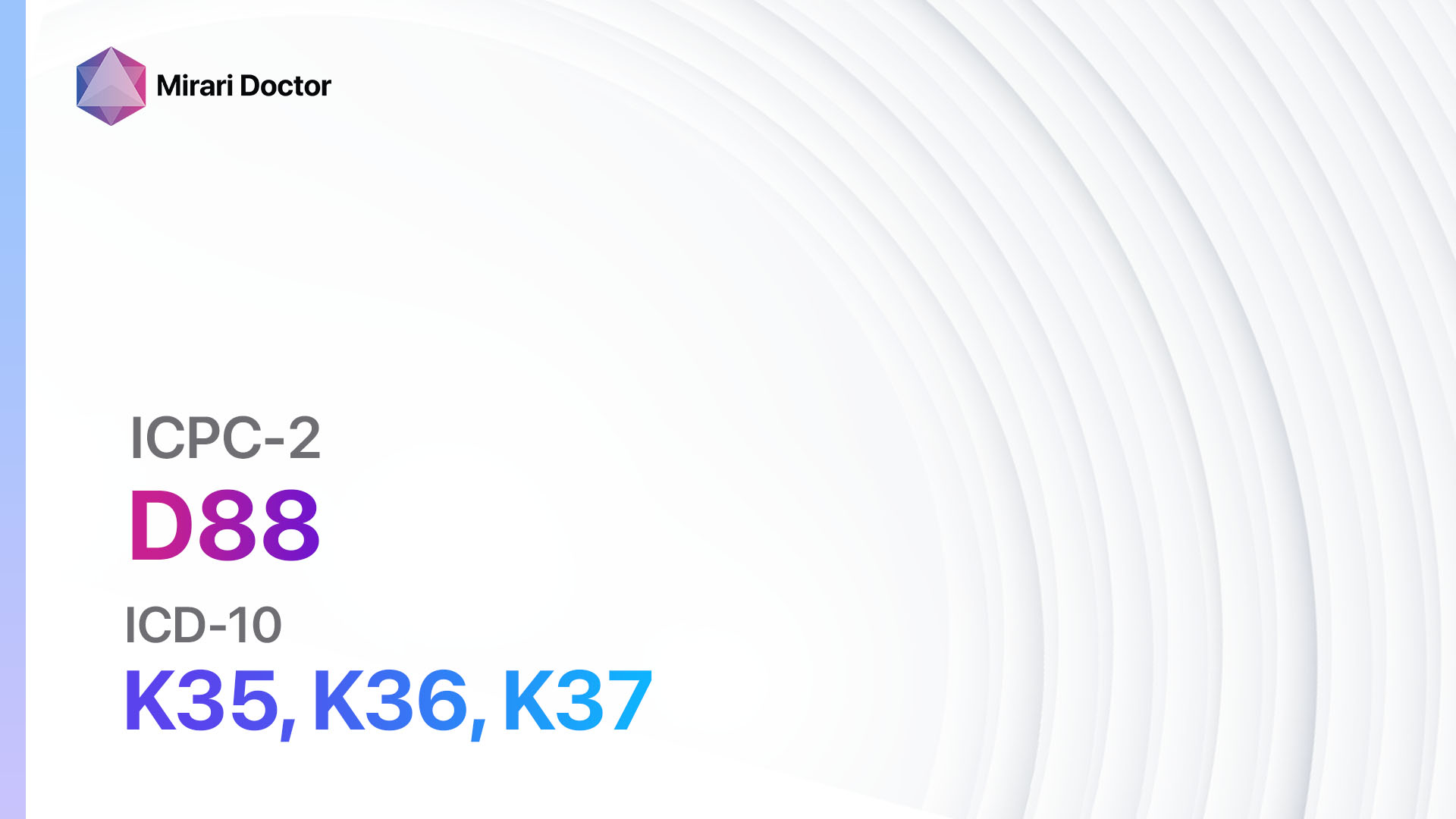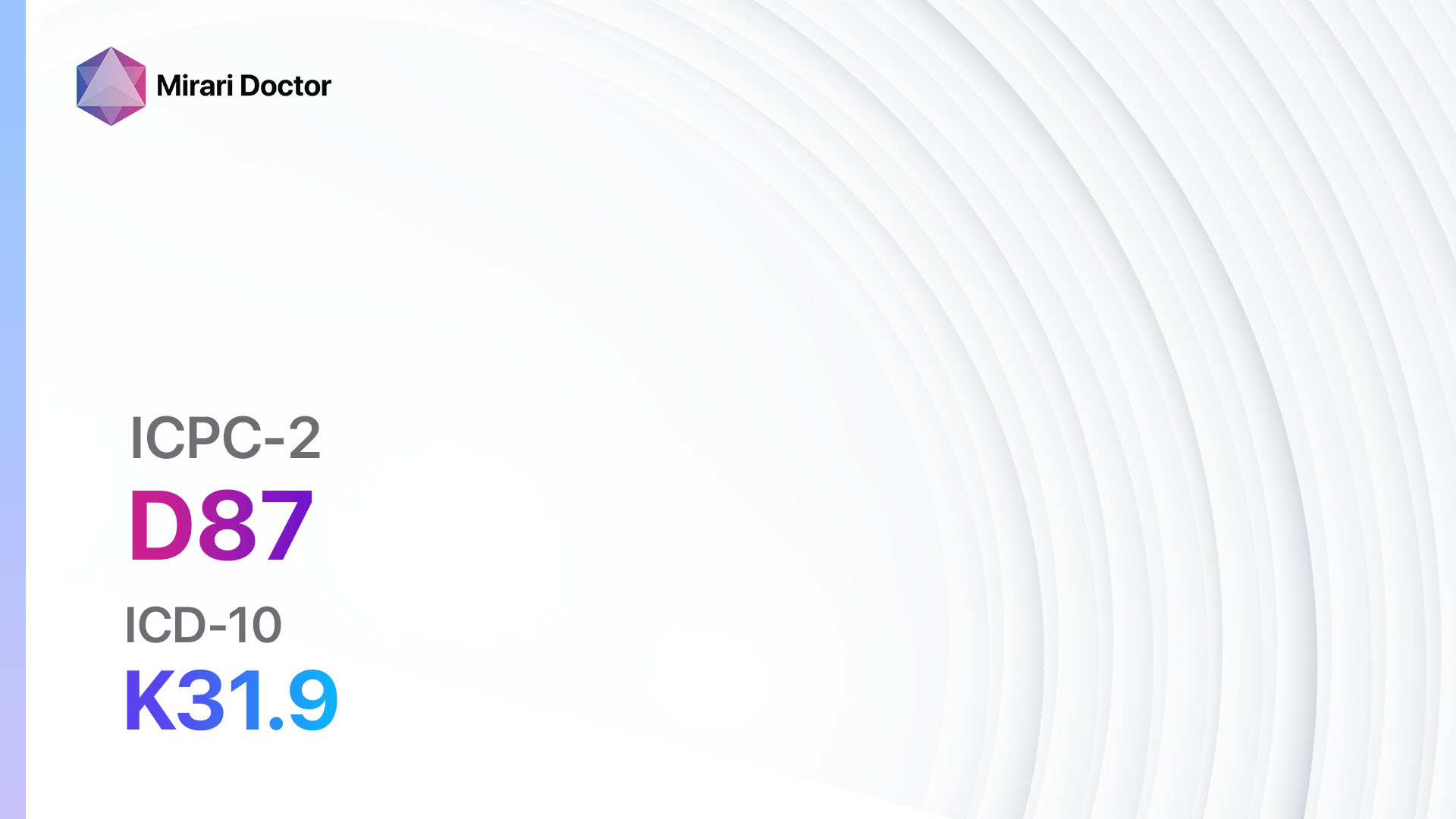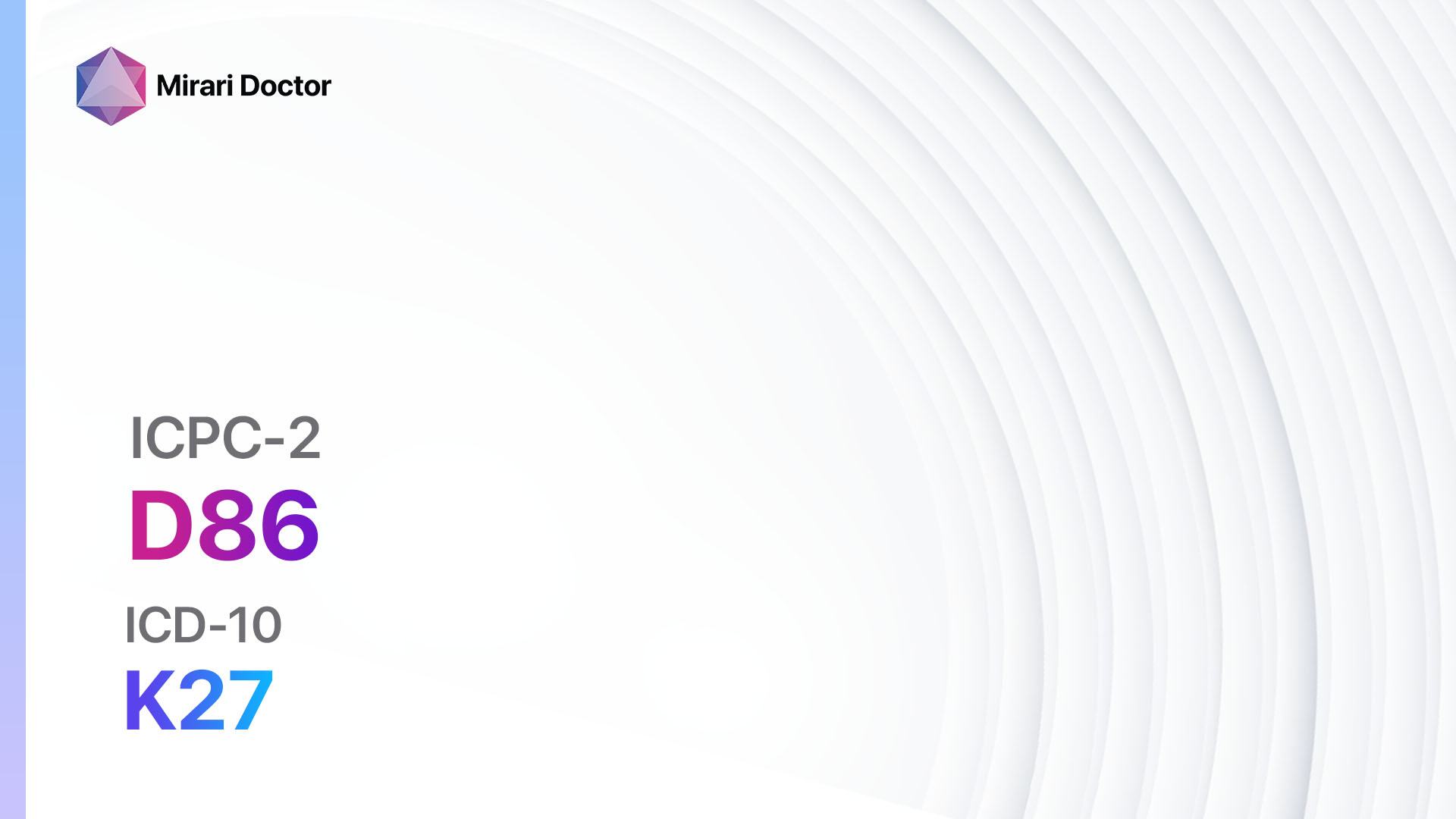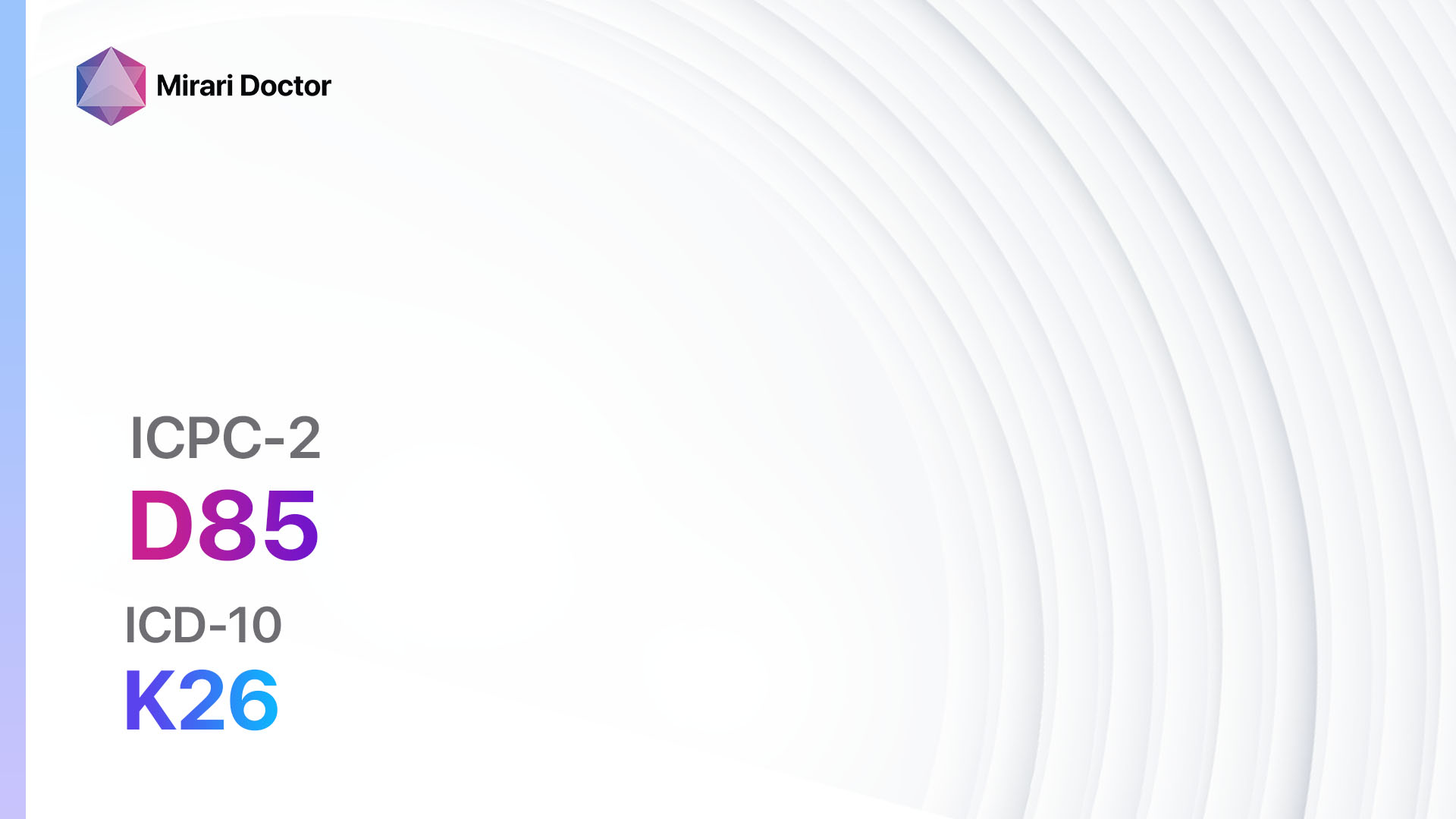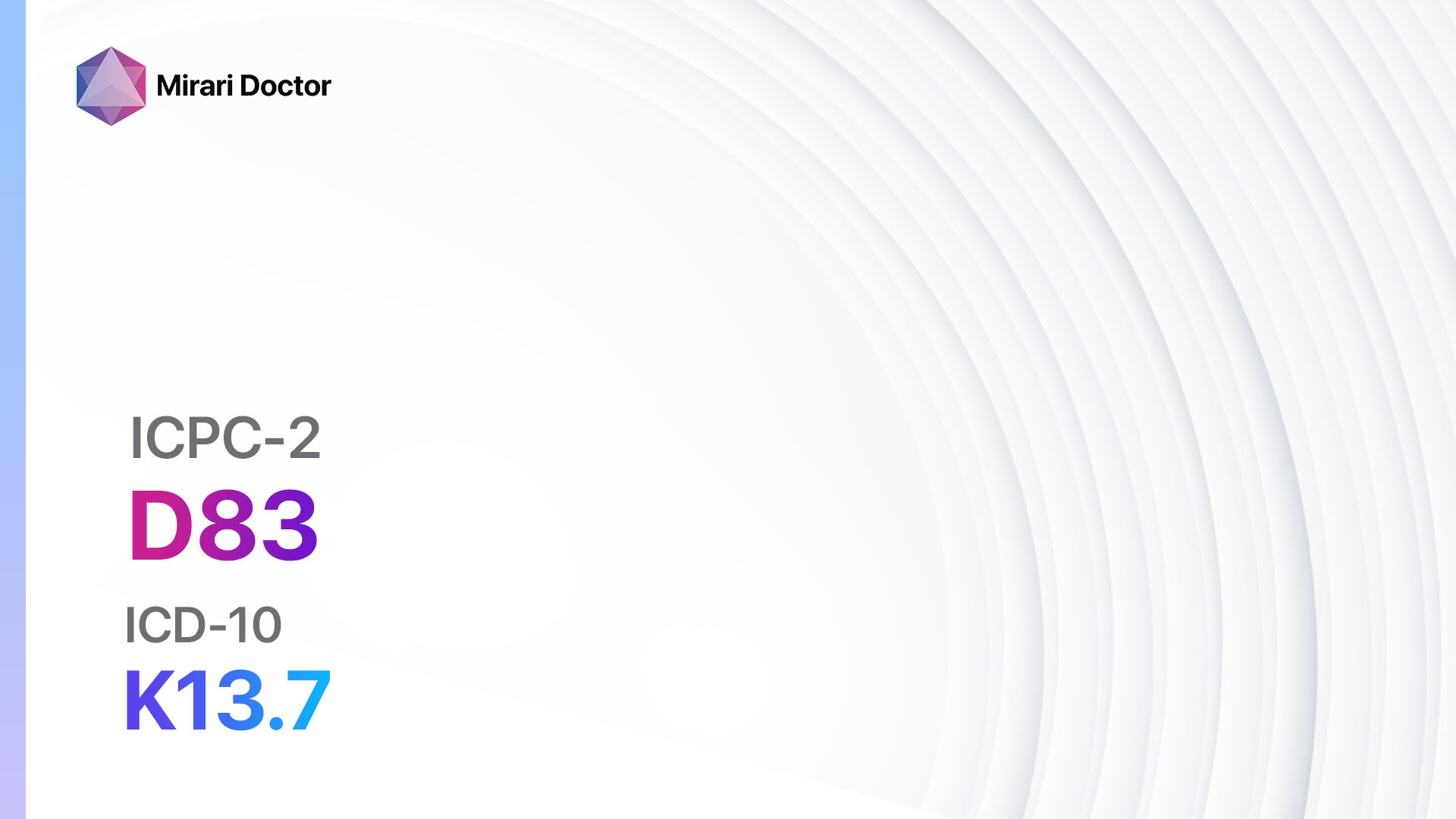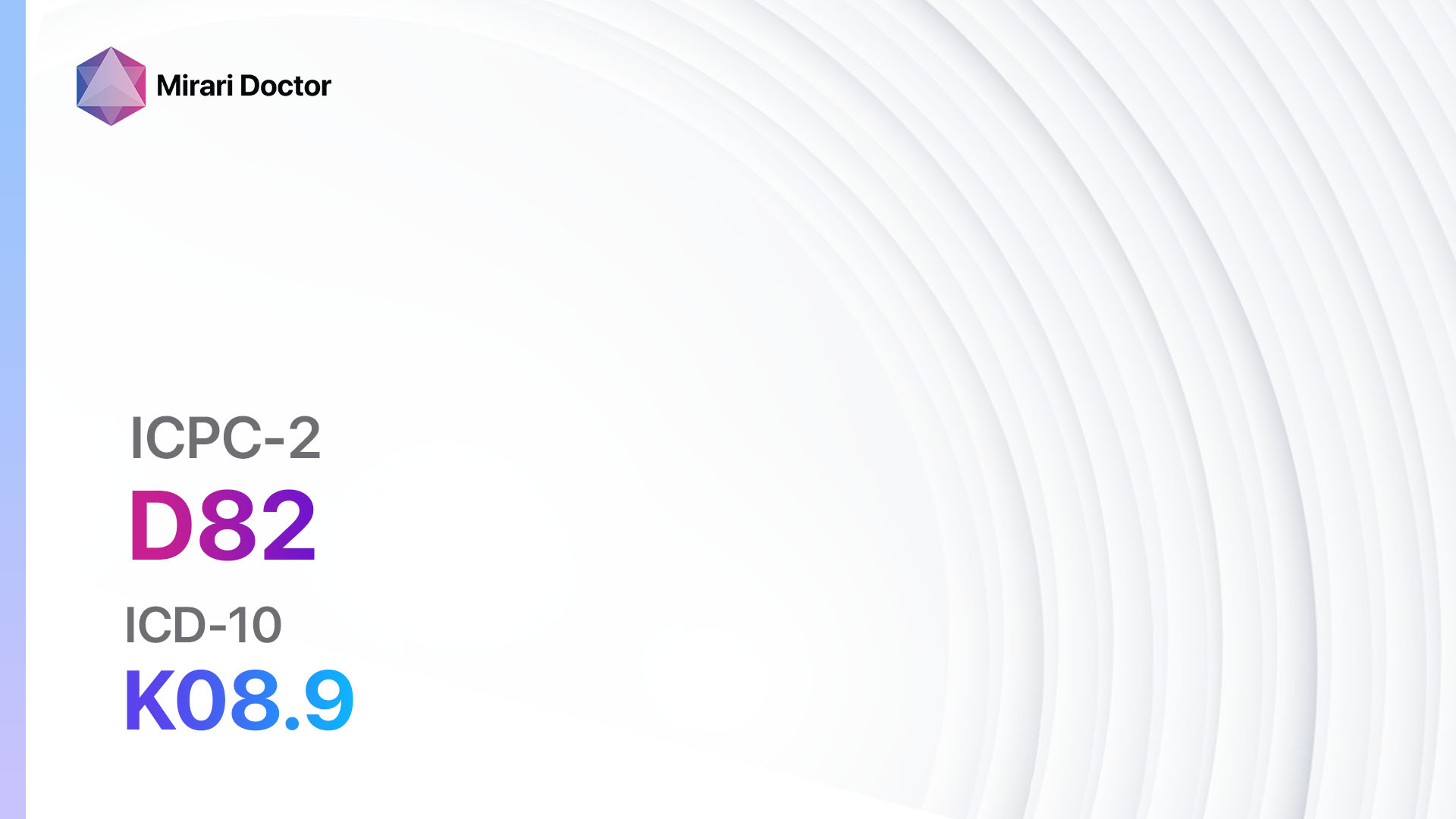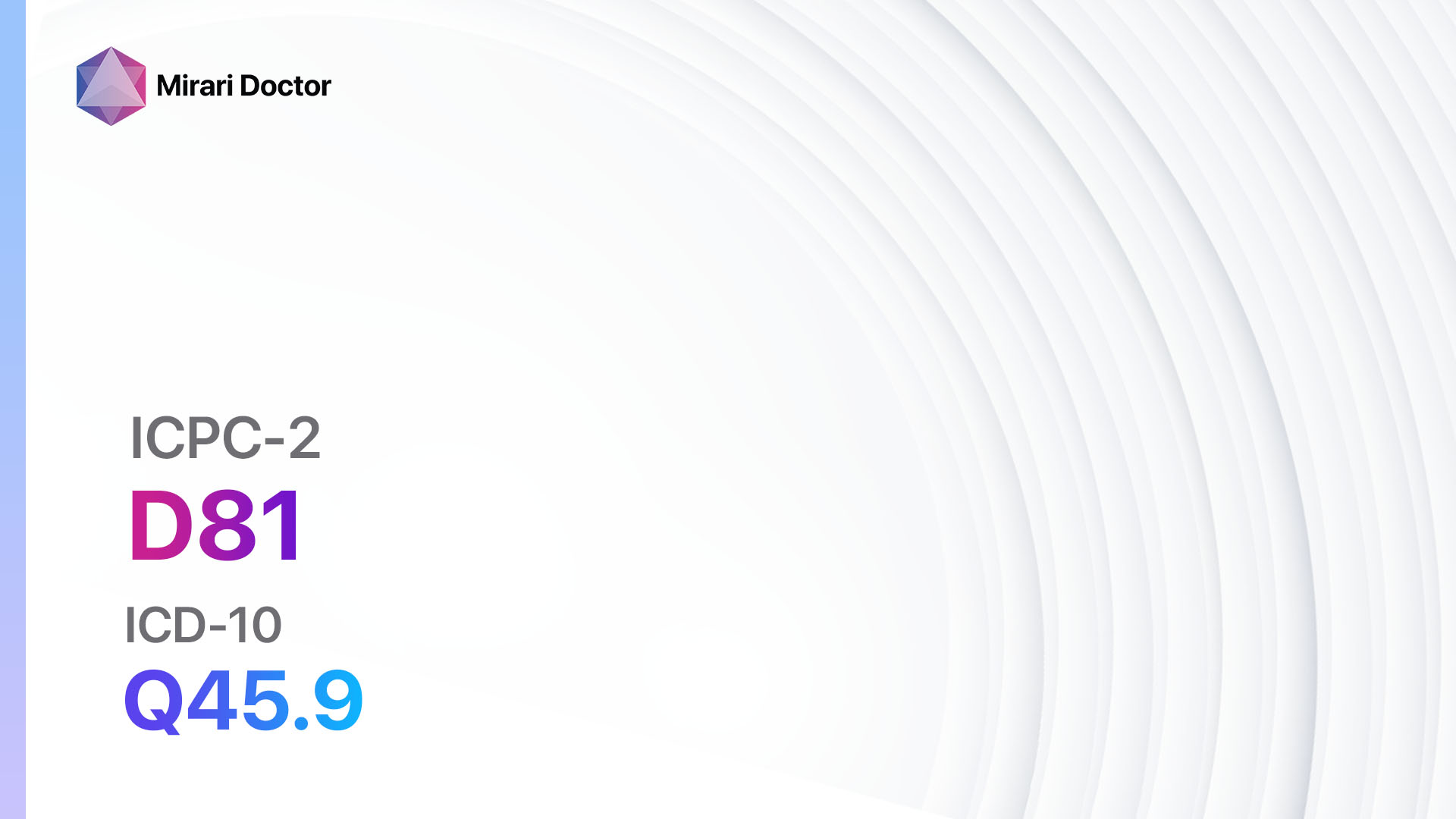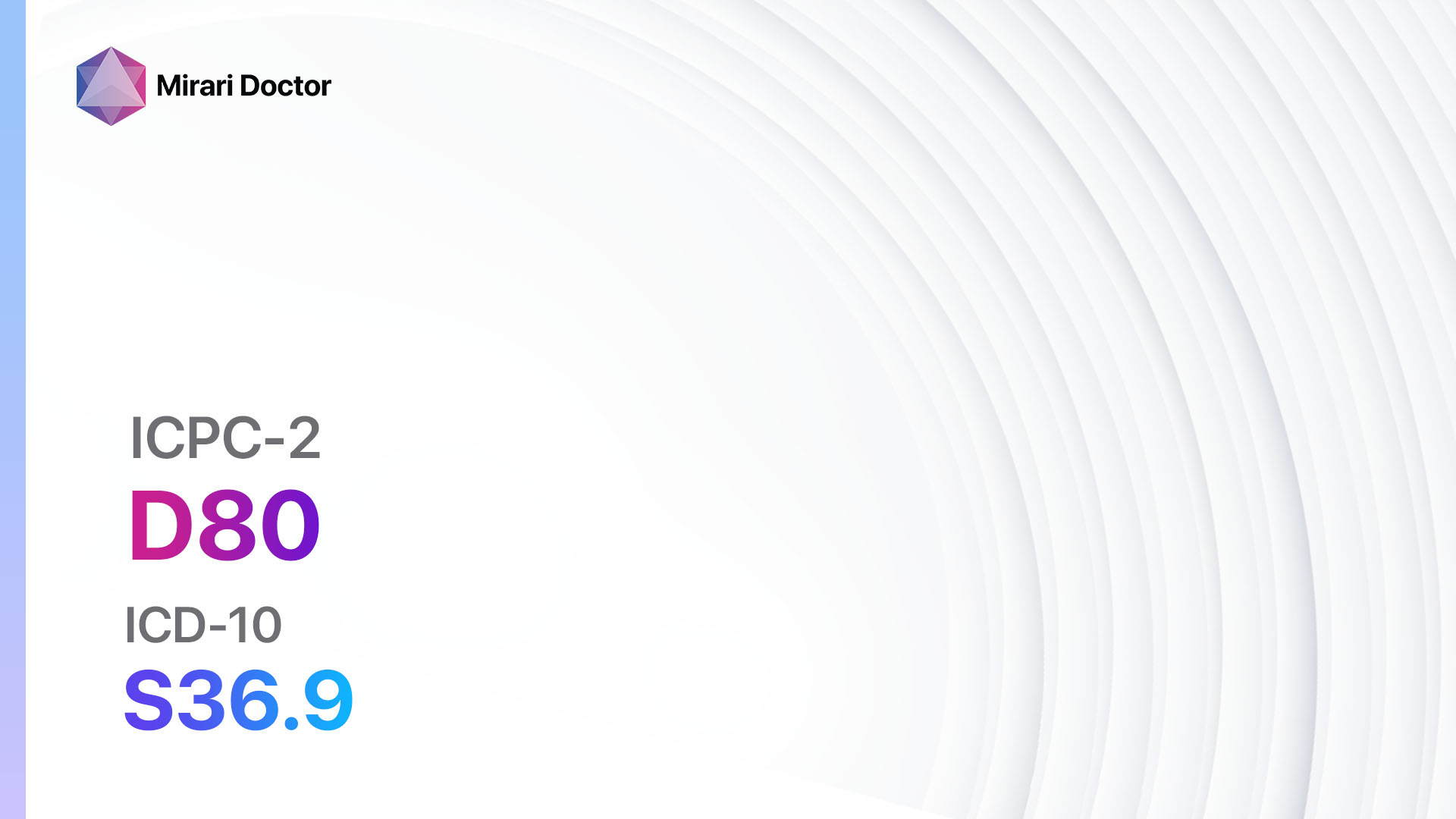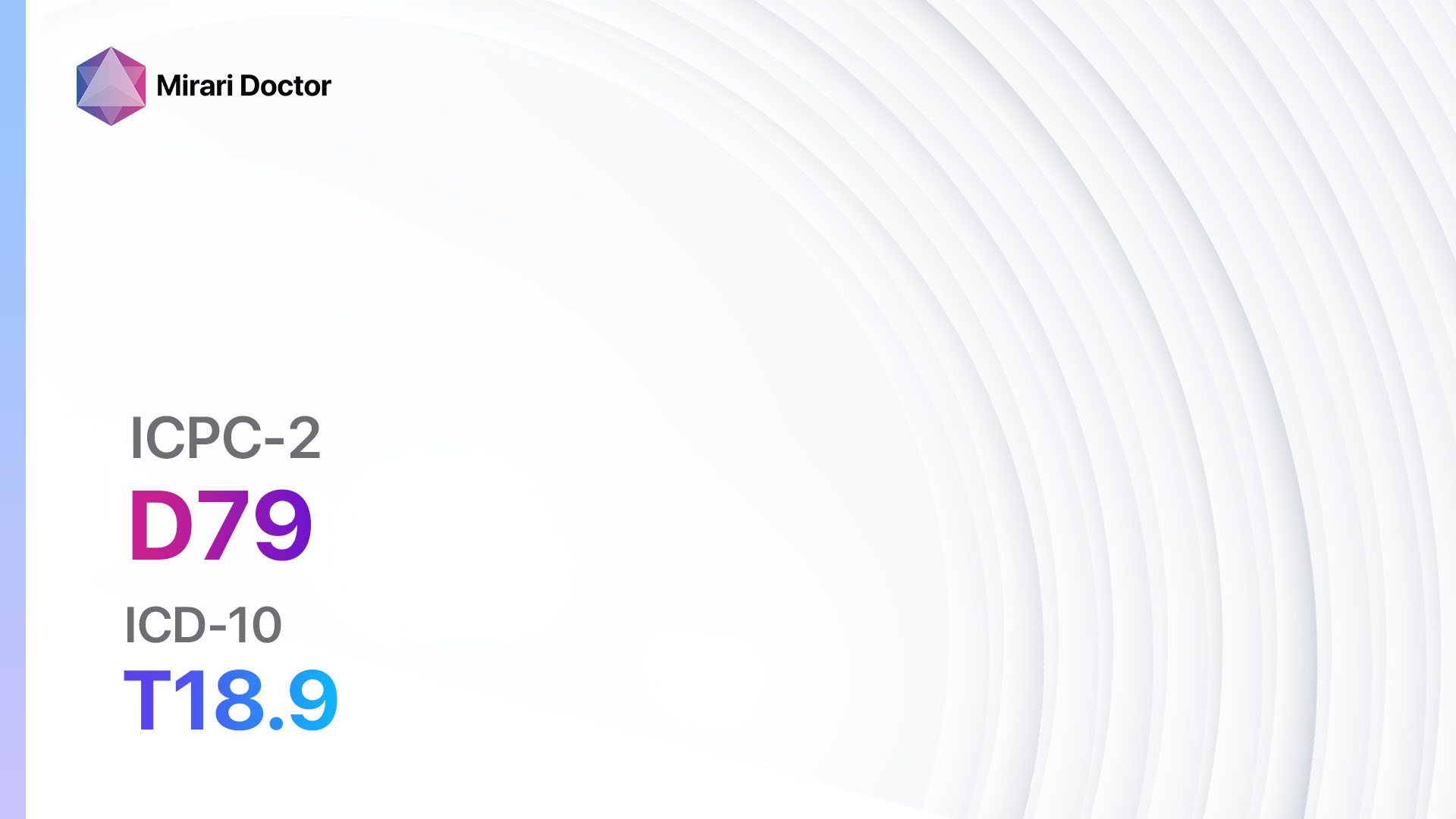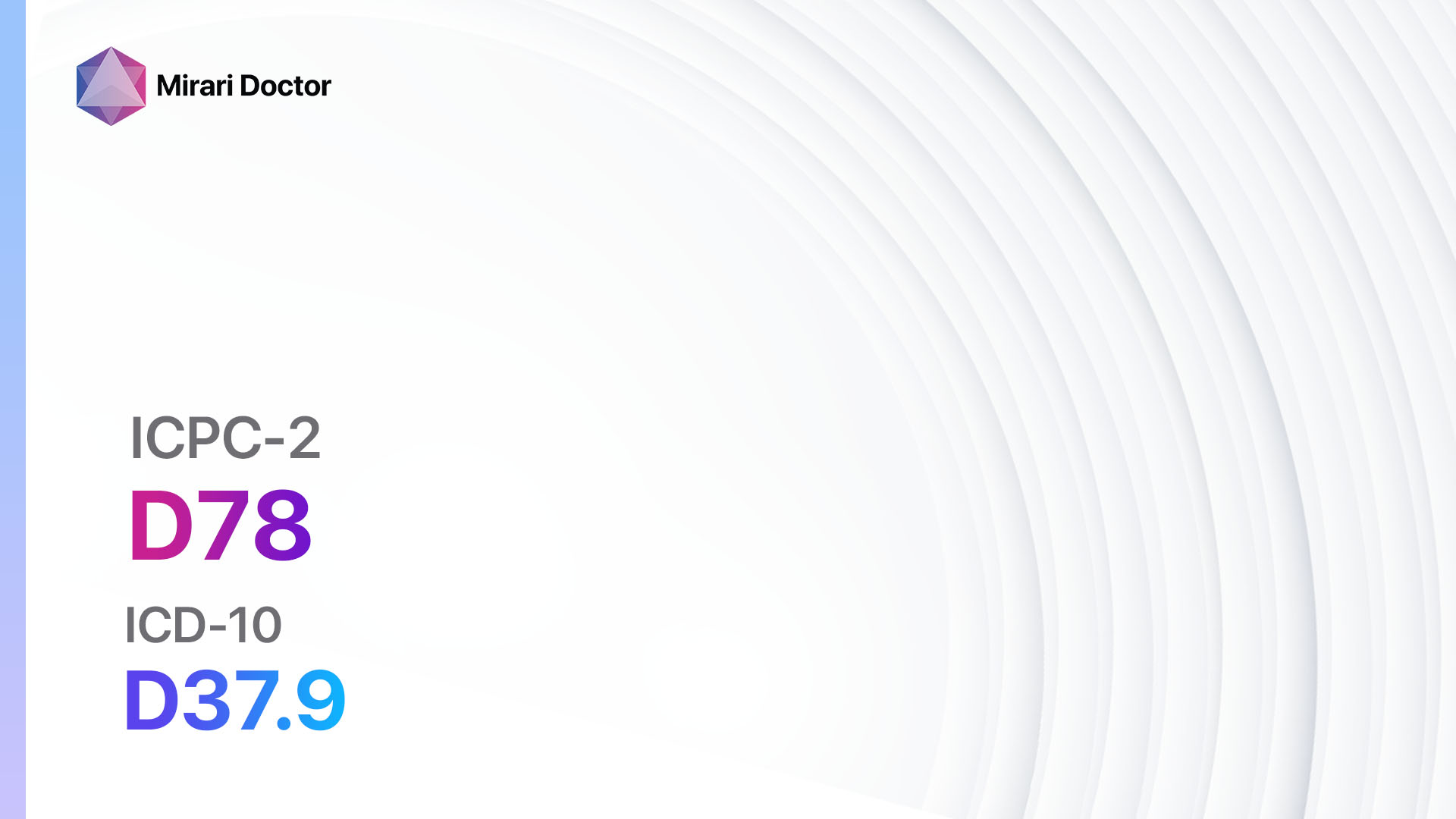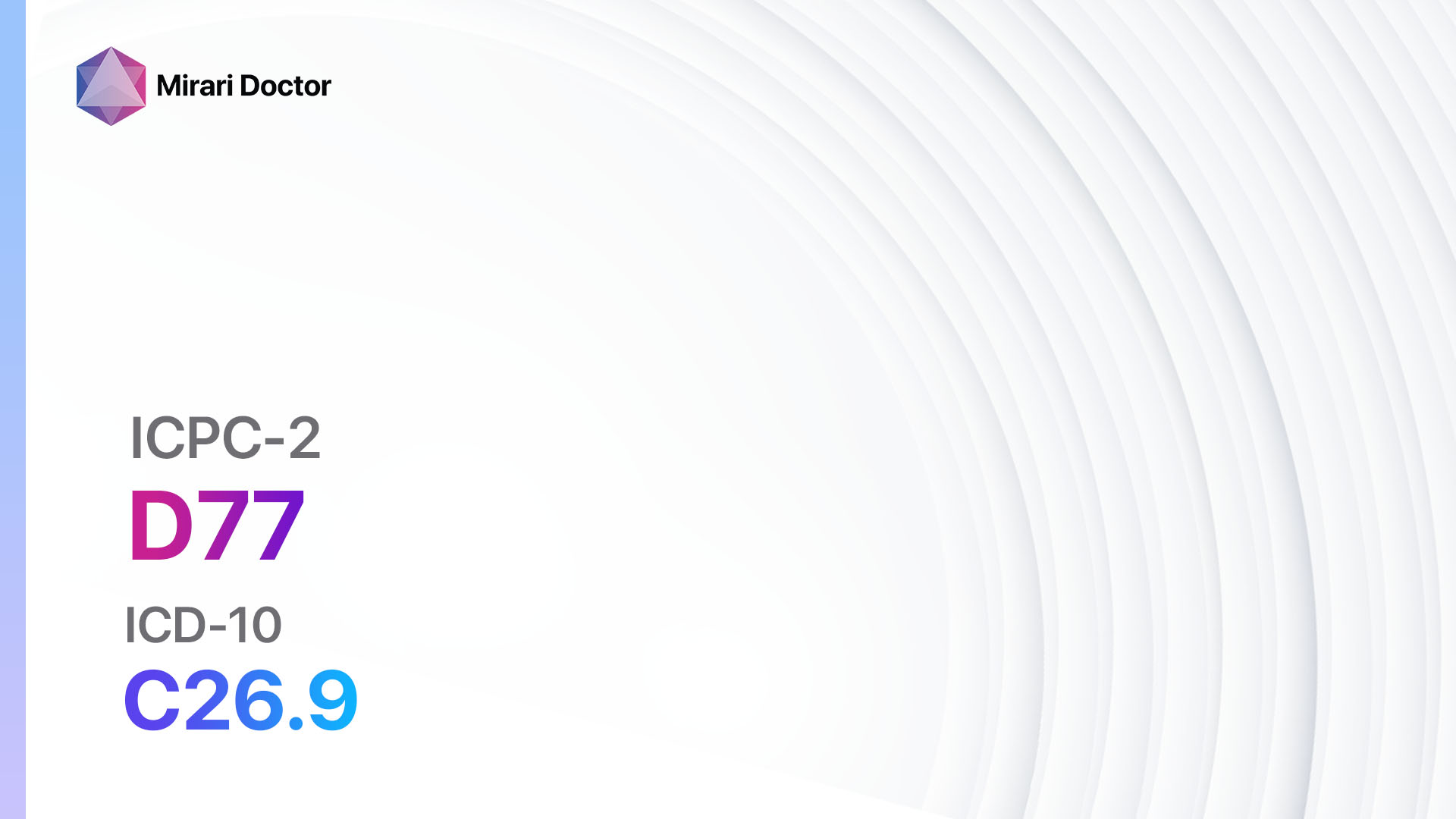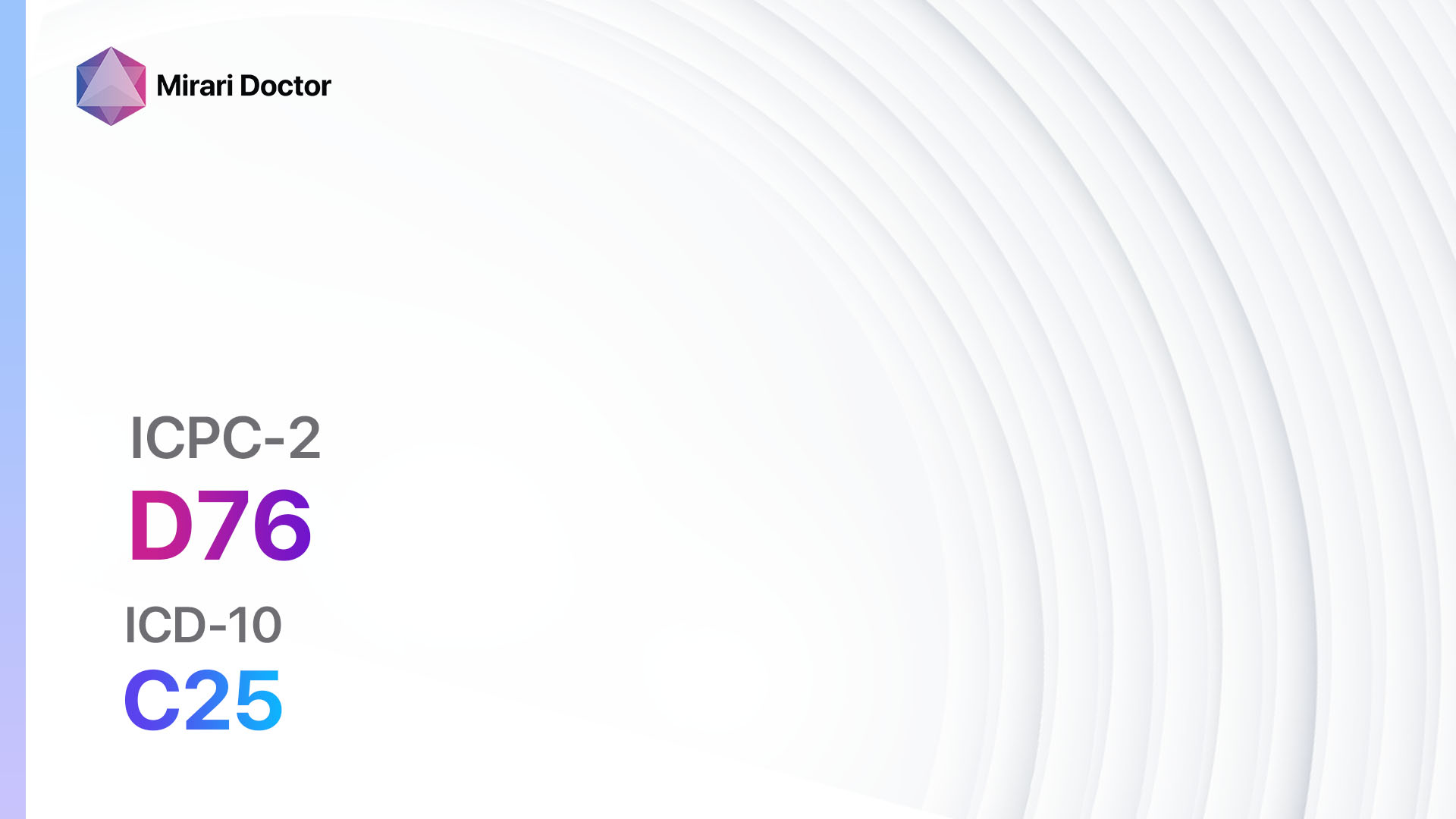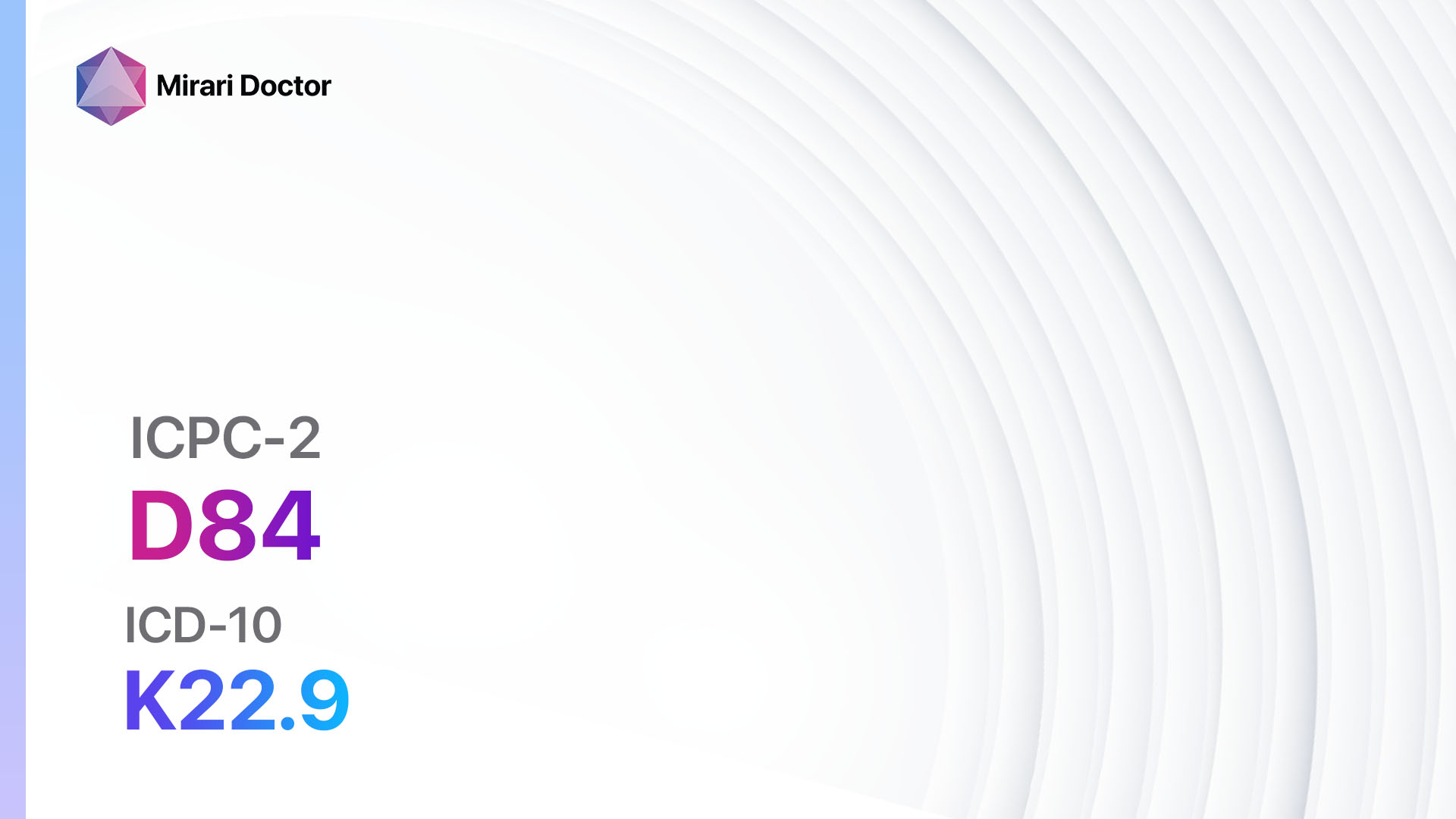
Introduction
Oesophagus disease refers to any condition that affects the oesophagus, the muscular tube that connects the throat to the stomach. These diseases can range from benign conditions, such as gastroesophageal reflux disease (GERD), to more serious conditions, such as oesophageal cancer[1]. This guide aims to provide an overview of the symptoms, causes, diagnostic steps, possible interventions, and lifestyle interventions for oesophagus disease.
Codes
– ICPC-2 Code: D84 Oesophagus disease
– ICD-10 Code: K22.9 Disease of oesophagus, unspecified
Symptoms
- Difficulty swallowing: Patients may experience pain or discomfort while swallowing food or liquids[2].
- Heartburn: A burning sensation in the chest or throat, often accompanied by a sour taste in the mouth[3].
- Chest pain: Some patients may experience chest pain that can be mistaken for a heart attack[4].
- Regurgitation: The backflow of stomach acid or food into the mouth[5].
- Chronic cough: A persistent cough that is not related to a respiratory infection[6].
- Hoarseness or voice changes: Changes in the voice, such as hoarseness or a raspy voice[7].
- Unexplained weight loss: Significant weight loss without a known cause[8].
Causes
- Gastroesophageal reflux disease (GERD): The most common cause of oesophagus disease, characterized by the backflow of stomach acid into the oesophagus.
- Hiatal hernia: A condition where a portion of the stomach protrudes into the chest cavity through the diaphragm[9].
- Oesophageal cancer: The abnormal growth of cells in the oesophagus, often associated with long-term GERD[10].
- Barrett’s oesophagus: A condition where the lining of the oesophagus is replaced by tissue similar to that found in the intestines, increasing the risk of oesophageal cancer.
- Oesophageal stricture: Narrowing of the oesophagus due to scar tissue formation, often caused by chronic acid reflux.
- Achalasia: A rare disorder where the muscles of the oesophagus do not properly relax, leading to difficulty swallowing.
Diagnostic Steps
Medical History
- Gather information about the patient’s symptoms, including the duration, severity, and any triggers.
- Identify any risk factors, such as smoking, obesity, or a family history of oesophageal cancer.
- Assess the patient’s medical history, including any previous diagnoses or treatments for oesophagus disease.
Physical Examination
- Perform a thorough physical examination, including a visual inspection of the throat and neck.
- Palpate the abdomen to check for any abnormalities or tenderness.
- Listen to the patient’s lungs to rule out any respiratory conditions that may be causing the symptoms.
Laboratory Tests
- Complete blood count (CBC): To check for signs of infection or anemia.
- Liver function tests: To assess liver health, as liver disease can contribute to oesophagus disease.
- Esophageal pH monitoring: Measures the amount of acid in the oesophagus over a 24-hour period to diagnose GERD.
- Biopsy: A sample of tissue is taken from the oesophagus for further examination under a microscope.
Diagnostic Imaging
- Upper gastrointestinal (GI) endoscopy: A flexible tube with a camera is inserted through the mouth to examine the oesophagus and stomach.
- Barium swallow: The patient swallows a liquid containing barium, which coats the oesophagus and allows for better visualization on X-rays.
- CT scan: Provides detailed images of the oesophagus, stomach, and surrounding structures.
- Endoscopic ultrasound: Combines endoscopy with ultrasound to assess the depth of tumours and lymph node involvement.
Other Tests
- Manometry: Measures the pressure and coordination of the muscles in the oesophagus.
- Esophageal motility study: Evaluates the movement and function of the oesophagus.
- 24-hour impedance-pH monitoring: Measures both acid and non-acid reflux events in the oesophagus.
Follow-up and Patient Education
- Schedule follow-up appointments to monitor the patient’s progress and adjust treatment as needed.
- Provide education on lifestyle modifications, such as dietary changes and weight loss, to manage symptoms and prevent disease progression.
- Discuss the importance of regular screenings for oesophageal cancer, especially for patients with Barrett’s oesophagus or a family history of the disease.
Possible Interventions
Traditional Interventions
Medications:
Top 5 drugs for Oesophagus disease:
- Proton pump inhibitors (PPIs) (e.g., Omeprazole, Esomeprazole, Lansoprazole):
- Cost: Generic versions can be $10-$50/month.
- Contraindications: Hypersensitivity to PPIs.
- Side effects: Headache, diarrhea, abdominal pain.
- Severe side effects: Increased risk of fractures, Clostridium difficile infection.
- Drug interactions: Warfarin, clopidogrel, methotrexate.
- Warning: Long-term use may increase the risk of certain nutrient deficiencies.
- H2 receptor antagonists (e.g., Ranitidine, Famotidine, Cimetidine):
- Cost: Generic versions can be $10-$30/month.
- Contraindications: Hypersensitivity to H2 receptor antagonists.
- Side effects: Headache, dizziness, constipation.
- Severe side effects: Rare, but may include blood disorders or liver problems.
- Drug interactions: Warfarin, phenytoin, theophylline.
- Warning: May reduce the absorption of certain medications.
- Antacids (e.g., Calcium carbonate, Magnesium hydroxide, Aluminum hydroxide):
- Cost: Over-the-counter options are available for <$10/month.
- Contraindications: Hypersensitivity to antacids.
- Side effects: Constipation or diarrhea, depending on the type of antacid.
- Severe side effects: Rare, but may include kidney problems or electrolyte imbalances.
- Drug interactions: Tetracycline antibiotics, iron supplements.
- Warning: Long-term use may lead to metabolic alkalosis or kidney stones.
- Prokinetic agents (e.g., Metoclopramide, Domperidone, Cisapride):
- Cost: Generic versions can be $10-$50/month.
- Contraindications: Gastrointestinal bleeding, mechanical obstruction.
- Side effects: Drowsiness, restlessness, diarrhea.
- Severe side effects: Neurological disorders, cardiac arrhythmias.
- Drug interactions: Antipsychotics, opioids, certain antibiotics.
- Warning: Long-term use may increase the risk of tardive dyskinesia.
- Mucosal protectants (e.g., Sucralfate):
- Cost: Generic versions can be $10-$30/month.
- Contraindications: Hypersensitivity to sucralfate.
- Side effects: Constipation, dry mouth.
- Severe side effects: Rare, but may include allergic reactions or kidney problems.
- Drug interactions: Antacids, certain antibiotics.
- Warning: Should be taken on an empty stomach for optimal effectiveness.
Alternative Drugs:
- Baclofen: A muscle relaxant that can help reduce the frequency of transient lower oesophageal sphincter relaxations.
- Tricyclic antidepressants: Can help reduce pain and improve symptoms in patients with oesophageal hypersensitivity.
- Selective serotonin reuptake inhibitors (SSRIs): May be beneficial for patients with oesophageal hypersensitivity or functional oesophageal disorders.
- Gabapentin: Can help reduce pain and improve symptoms in patients with oesophageal hypersensitivity.
- Benzodiazepines: May be used in combination with other medications to manage anxiety-related symptoms.
Surgical Procedures:
- Fundoplication: A surgical procedure to reinforce the lower oesophageal sphincter and prevent acid reflux. Cost: $10,000 to $30,000.
- Oesophageal dilation: Widening of a narrowed oesophagus using an endoscope or bougie dilators. Cost: $5,000 to $15,000.
- Endoscopic mucosal resection: Removal of abnormal tissue in the oesophagus using an endoscope. Cost: $10,000 to $20,000.
- Oesophagectomy: Surgical removal of a portion or the entire oesophagus, often performed for oesophageal cancer. Cost: $50,000 to $100,000.
- Stent placement: Insertion of a stent to keep the oesophagus open and improve swallowing. Cost: $10,000 to $30,000.
Alternative Interventions
- Acupuncture: May help reduce symptoms of oesophagus disease, such as heartburn and difficulty swallowing. Cost: $60-$120 per session.
- Herbal supplements: Certain herbs, such as slippery elm or marshmallow root, may help soothe the oesophagus and reduce inflammation. Cost: Varies depending on the specific supplement.
- Dietary modifications: Avoiding trigger foods, such as spicy or acidic foods, and adopting a low-fat, high-fiber diet may help alleviate symptoms. Cost: Varies depending on individual food choices.
- Weight loss: Losing excess weight can help reduce pressure on the stomach and lower oesophageal sphincter, reducing the risk of acid reflux. Cost: Varies depending on the chosen weight loss method.
- Elevating the head of the bed: Raising the head of the bed by 6 to 8 inches can help prevent acid reflux during sleep. Cost: Minimal or no cost.
Lifestyle Interventions
- Smoking cessation: Quitting smoking can help reduce symptoms of oesophagus disease and improve overall health. Cost: Varies depending on the chosen smoking cessation method.
- Weight management: Maintaining a healthy weight through regular exercise and a balanced diet can help alleviate symptoms. Cost: Varies depending on individual choices for exercise and diet.
- Stress management: Practicing stress-reducing techniques, such as meditation or yoga, can help reduce symptoms triggered by stress. Cost: Varies depending on the chosen stress management method.
- Avoiding trigger foods: Identifying and avoiding foods that trigger symptoms, such as spicy or fatty foods, can help manage symptoms. Cost: Varies depending on individual food choices.
- Eating smaller meals: Consuming smaller, more frequent meals can help prevent overeating and reduce the risk of acid reflux. Cost: Minimal or no cost.
It is important to note that the cost ranges provided are approximate and may vary depending on the location and availability of the interventions. It is recommended to consult with a healthcare professional for personalized treatment options and cost estimates.
Mirari Cold Plasma Alternative Intervention
Understanding Mirari Cold Plasma
- Safe and Non-Invasive Treatment: Mirari Cold Plasma is a safe and non-invasive treatment option for various skin conditions. It does not require incisions, minimizing the risk of scarring, bleeding, or tissue damage.
- Efficient Extraction of Foreign Bodies: Mirari Cold Plasma facilitates the removal of foreign bodies from the skin by degrading and dissociating organic matter, allowing easier access and extraction.
- Pain Reduction and Comfort: Mirari Cold Plasma has a local analgesic effect, providing pain relief during the treatment, making it more comfortable for the patient.
- Reduced Risk of Infection: Mirari Cold Plasma has antimicrobial properties, effectively killing bacteria and reducing the risk of infection.
- Accelerated Healing and Minimal Scarring: Mirari Cold Plasma stimulates wound healing and tissue regeneration, reducing healing time and minimizing the formation of scars.
Mirari Cold Plasma Prescription
Video instructions for using Mirari Cold Plasma Device – D84 Oesophagus disease (ICD-10:K22.9)
| Mild | Moderate | Severe |
| Mode setting: 1 (Infection) Location: 6 (Throat, Lymphatic & Thyroid) Morning: 15 minutes, Evening: 15 minutes |
Mode setting: 1 (Infection) Location: 6 (Throat, Lymphatic & Thyroid) Morning: 30 minutes, Lunch: 30 minutes, Evening: 30 minutes |
Mode setting: 1 (Infection) Location: 6 (Throat, Lymphatic & Thyroid) Morning: 30 minutes, Lunch: 30 minutes, Evening: 30 minutes |
| Mode setting: 2 (Wound Healing) Location: 6 (Throat, Lymphatic & Thyroid) Morning: 15 minutes, Evening: 15 minutes |
Mode setting: 2 (Wound Healing) Location: 6 (Throat, Lymphatic & Thyroid) Morning: 30 minutes, Lunch: 30 minutes, Evening: 30 minutes |
Mode setting: 2 (Wound Healing) Location: 6 (Throat, Lymphatic & Thyroid) Morning: 30 minutes, Lunch: 30 minutes, Evening: 30 minutes |
| Mode setting: 3 (Antiviral Therapy) Location: 3 (Kidney, Liver & Spleen) Morning: 15 minutes, Evening: 15 minutes |
Mode setting:3 (Antiviral Therapy) Location: 3 (Kidney, Liver & Spleen) Morning: 30 minutes, Lunch: 30 minutes, Evening: 30 minutes |
Mode setting: 3 (Antiviral Therapy) Location: 3 (Kidney, Liver & Spleen) Morning: 30 minutes, Lunch: 30 minutes, Evening: 30 minutes |
| Mode setting: 3 (Antiviral Therapy) Location: 3 (Kidney, Liver & Spleen) Morning: 15 minutes, Evening: 15 minutes |
Mode setting: 3 (Antiviral Therapy) Location: 3 (Kidney, Liver & Spleen) Morning: 30 minutes, Lunch: 30 minutes, Evening: 30 minutes |
Mode setting: 3 (Antiviral Therapy) Location: 3 (Kidney, Liver & Spleen) Morning: 30 minutes, Lunch: 30 minutes, Evening: 30 minutes |
| Total Morning: 60 minutes approx. $10 USD, Evening: 60 minutes approx. $10 USD |
Total Morning: 120 minutes approx. $20 USD, Lunch: 120 minutes approx. $20 USD, Evening: 120 minutes approx. $20 USD, |
Total Morning: 120 minutes approx. $20 USD, Lunch: 120 minutes approx. $20 USD, Evening: 120 minutes approx. $20 USD, |
| Usual treatment for 7-60 days approx. $140 USD – $1200 USD | Usual treatment for 6-8 weeks approx. $2,520 USD – $3,360 USD |
Usual treatment for 3-6 months approx. $5,400 USD – $10,800 USD
|
 |
|
Use the Mirari Cold Plasma device to treat Oesophagus disease effectively.
WARNING: MIRARI COLD PLASMA IS DESIGNED FOR THE HUMAN BODY WITHOUT ANY ARTIFICIAL OR THIRD PARTY PRODUCTS. USE OF OTHER PRODUCTS IN COMBINATION WITH MIRARI COLD PLASMA MAY CAUSE UNPREDICTABLE EFFECTS, HARM OR INJURY. PLEASE CONSULT A MEDICAL PROFESSIONAL BEFORE COMBINING ANY OTHER PRODUCTS WITH USE OF MIRARI.
Step 1: Cleanse the Skin
- Start by cleaning the affected area of the skin with a gentle cleanser or mild soap and water. Gently pat the area dry with a clean towel.
Step 2: Prepare the Mirari Cold Plasma device
- Ensure that the Mirari Cold Plasma device is fully charged or has fresh batteries as per the manufacturer’s instructions. Make sure the device is clean and in good working condition.
- Switch on the Mirari device using the power button or by following the specific instructions provided with the device.
- Some Mirari devices may have adjustable settings for intensity or treatment duration. Follow the manufacturer’s instructions to select the appropriate settings based on your needs and the recommended guidelines.
Step 3: Apply the Device
- Place the Mirari device in direct contact with the affected area of the skin. Gently glide or hold the device over the skin surface, ensuring even coverage of the area experiencing.
- Slowly move the Mirari device in a circular motion or follow a specific pattern as indicated in the user manual. This helps ensure thorough treatment coverage.
Step 4: Monitor and Assess:
- Keep track of your progress and evaluate the effectiveness of the Mirari device in managing your Oesophagus disease. If you have any concerns or notice any adverse reactions, consult with your health care professional.
Note
This guide is for informational purposes only and should not replace the advice of a medical professional. Always consult with your healthcare provider or a qualified medical professional for personal advice, diagnosis, or treatment. Do not solely rely on the information presented here for decisions about your health. Use of this information is at your own risk. The authors of this guide, nor any associated entities or platforms, are not responsible for any potential adverse effects or outcomes based on the content.
Mirari Cold Plasma System Disclaimer
- Purpose: The Mirari Cold Plasma System is a Class 2 medical device designed for use by trained healthcare professionals. It is registered for use in Thailand and Vietnam. It is not intended for use outside of these locations.
- Informational Use: The content and information provided with the device are for educational and informational purposes only. They are not a substitute for professional medical advice or care.
- Variable Outcomes: While the device is approved for specific uses, individual outcomes can differ. We do not assert or guarantee specific medical outcomes.
- Consultation: Prior to utilizing the device or making decisions based on its content, it is essential to consult with a Certified Mirari Tele-Therapist and your medical healthcare provider regarding specific protocols.
- Liability: By using this device, users are acknowledging and accepting all potential risks. Neither the manufacturer nor the distributor will be held accountable for any adverse reactions, injuries, or damages stemming from its use.
- Geographical Availability: This device has received approval for designated purposes by the Thai and Vietnam FDA. As of now, outside of Thailand and Vietnam, the Mirari Cold Plasma System is not available for purchase or use.
References
- Antunes, C., & Aleem, A. (2021). Esophageal Cancer. In StatPearls. StatPearls Publishing.
- Aziz, Q., Fass, R., Gyawali, C. P., Miwa, H., Pandolfino, J. E., & Zerbib, F. (2016). Esophageal disorders. Gastroenterology, 150(6), 1368-1379.
- Katz, P. O., Gerson, L. B., & Vela, M. F. (2013). Guidelines for the diagnosis and management of gastroesophageal reflux disease. The American journal of gastroenterology, 108(3), 308-328.
- Fass, R., & Dickman, R. (2006). Non-cardiac chest pain: an update. Neurogastroenterology & Motility, 18(6), 408-417.
- Vakil, N., Van Zanten, S. V., Kahrilas, P., Dent, J., Jones, R., & Global Consensus Group. (2006). The Montreal definition and classification of gastroesophageal reflux disease: a global evidence-based consensus. The American journal of gastroenterology, 101(8), 1900-1920.
- Irwin, R. S. (2006). Chronic cough due to gastroesophageal reflux disease: ACCP evidence-based clinical practice guidelines. Chest, 129(1), 80S-94S.
- Koufman, J. A. (1991). The otolaryngologic manifestations of gastroesophageal reflux disease (GERD): a clinical investigation of 225 patients using ambulatory 24-hour pH monitoring and an experimental investigation of the role of acid and pepsin in the development of laryngeal injury. The Laryngoscope, 101(4 Pt 2 Suppl 53), 1-78.
- Shaheen, N., & Provenzale, D. (2003). The epidemiology of gastroesophageal reflux disease. The American journal of the medical sciences, 326(5), 264-273.
- Gordon, C., Kang, J. Y., Neild, P. J., & Maxwell, J. D. (2004). The role of the hiatus hernia in gastro-oesophageal reflux disease. Alimentary pharmacology & therapeutics, 20(7), 719-732.
- Lagergren, J., Bergström, R., Lindgren, A., & Nyrén, O. (1999). Symptomatic gastroesophageal reflux as a risk factor for esophageal adenocarcinoma. New England journal of medicine, 340(11), 825-831.
Related articles
Made in USA


